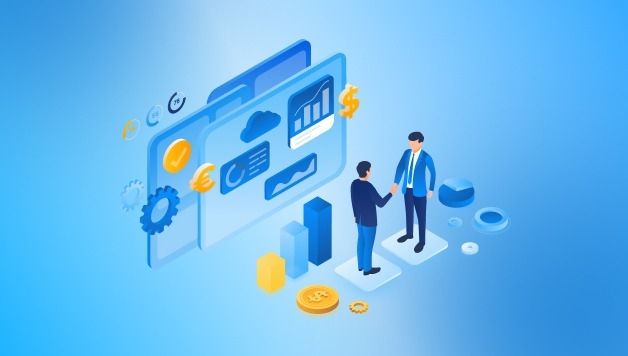
The SaaS FinTech industry in 2025 is evolving faster than ever. With increasing customer expectations, heightened regulatory requirements, and fierce competition, the monetization model you choose can make or break your startup’s success.
This guide explores proven monetization models for FinTech SaaS startups in 2025, offering actionable insights on how to select, implement, and optimize revenue strategies to ensure both profitability and scalability.
Why Monetization Strategy Matters for FinTech SaaS
In the competitive SaaS space, especially within FinTech, your revenue model is more than just a pricing structure—it’s your growth engine. The right monetization model:
Ensures predictable recurring revenue.
Aligns with customer expectations.
Supports compliance and industry trust.
Encourages product stickiness and retention.
1. Subscription-Based Monetization Models
Overview
Subscription pricing remains the most common SaaS revenue model, offering predictable recurring revenue for FinTech companies. Customers pay a recurring fee—monthly, quarterly, or annually—for continued access.
Why It Works in FinTech SaaS
Creates stable, forecastable cash flow.
Encourages long-term customer relationships.
Simplifies budgeting for both provider and client.
Popular Subscription Models in 2025
Tiered Pricing – Different plans based on usage limits or features.
Per-User Pricing – Charges based on the number of active users.
Usage-Based Add-ons – Core subscription plus extra charges for premium features.
Example: A digital banking SaaS platform might charge $49/month for small businesses, $199/month for mid-market, and custom enterprise pricing.
2. Transaction-Based Monetization
Overview
In transaction-based pricing, revenue is generated from each financial transaction processed through your platform. This model is especially powerful for payment gateways, trading platforms, and lending software.
Benefits for FinTech Startups
Directly links revenue to customer activity.
Scales naturally with transaction volume.
Encourages growth from active users.
Real-World Example
A FinTech SaaS offering cross-border payment solutions could take a 0.5% fee per transaction processed.
3. Freemium to Premium Upsell
Overview
The freemium model offers a basic version of the software at no cost, with premium features available for a fee. This approach accelerates user acquisition and builds brand trust.
Best Practices
Keep the free tier useful but limited in advanced features.
Offer time-sensitive premium trials to encourage conversion.
Use in-app prompts to showcase premium benefits.
Example: A personal finance SaaS might offer free budgeting tools but charge for AI-powered investment recommendations.
4. Hybrid Monetization Models
Overview
Hybrid pricing blends multiple strategies—such as a base subscription plus transaction fees or freemium plus subscription upgrades.
Why Hybrid Models Work in 2025
Balances predictable revenue with growth-based earnings.
Appeals to diverse customer segments.
Enables flexible pricing experimentation.
Example: A lending SaaS might charge a $99/month subscription fee plus a small percentage of each approved loan transaction.
5. Pay-As-You-Go Pricing
Overview
Also called usage-based pricing, this model charges customers only for what they use. It’s highly attractive to startups and SMBs wary of fixed costs.
Advantages
Low barrier to entry for customers.
Aligns cost with actual value received.
Ideal for high-volume, variable-use platforms.
Example: A credit scoring API SaaS could charge $0.10 per API call, scaling with client demand.
6. Revenue Sharing Partnerships
Overview
In a revenue-sharing model, your SaaS earns a percentage of your client’s earnings generated through your platform.
Benefits
Encourages deeper collaboration with clients.
Works well with embedded finance solutions.
Aligns success with customer growth.
Example: A marketplace SaaS could take a percentage of every vendor sale processed.
Choosing the Right Monetization Model
When selecting the best FinTech monetization strategies for your startup, consider:
Target Market Needs – SMBs may prefer pay-as-you-go, while enterprises lean toward annual contracts.
Regulatory Compliance – Ensure your pricing structure meets financial laws in your operating regions.
Scalability – Your model should grow with your user base without operational bottlenecks.
Value Perception – Pricing should match the perceived value of your service.
Trends Shaping SaaS Business Models in 2025
AI-Driven Personalization – Automated pricing recommendations based on user behavior.
Microtransactions – Especially in micro-lending and fractional investing platforms.
Globalized Pricing – Adjusting prices for different currencies and economic regions.
Conclusion
In 2025, the most successful monetization models for SaaS FinTech startups are those that blend predictability, flexibility, and customer alignment. Whether you choose subscription-based, transaction-based, freemium, or hybrid approaches, the key is to stay agile and data-driven.
By selecting the right model and continually refining it—you can maximize growth, boost retention, and secure a competitive advantage in the evolving FinTech SaaS landscape.
